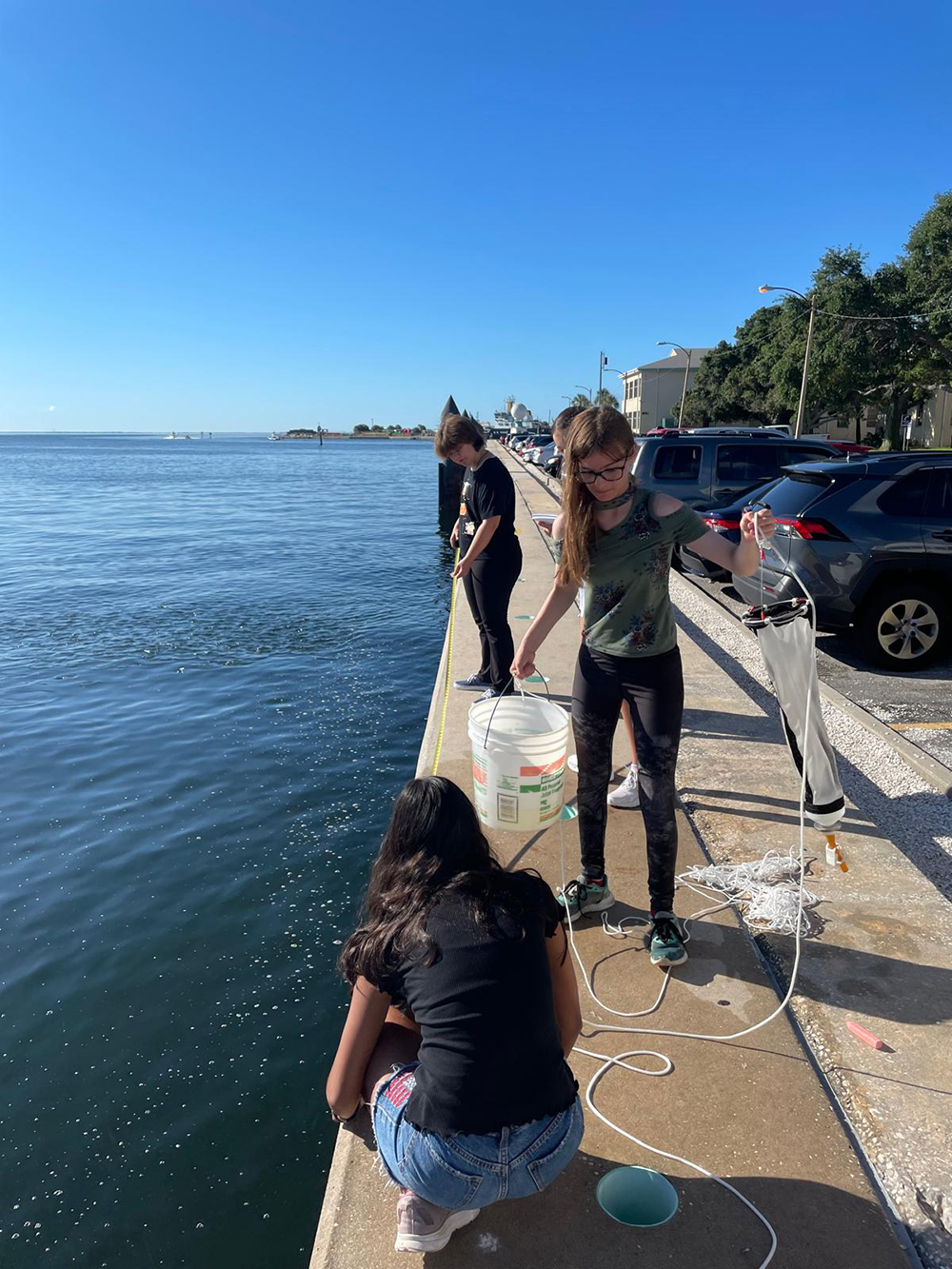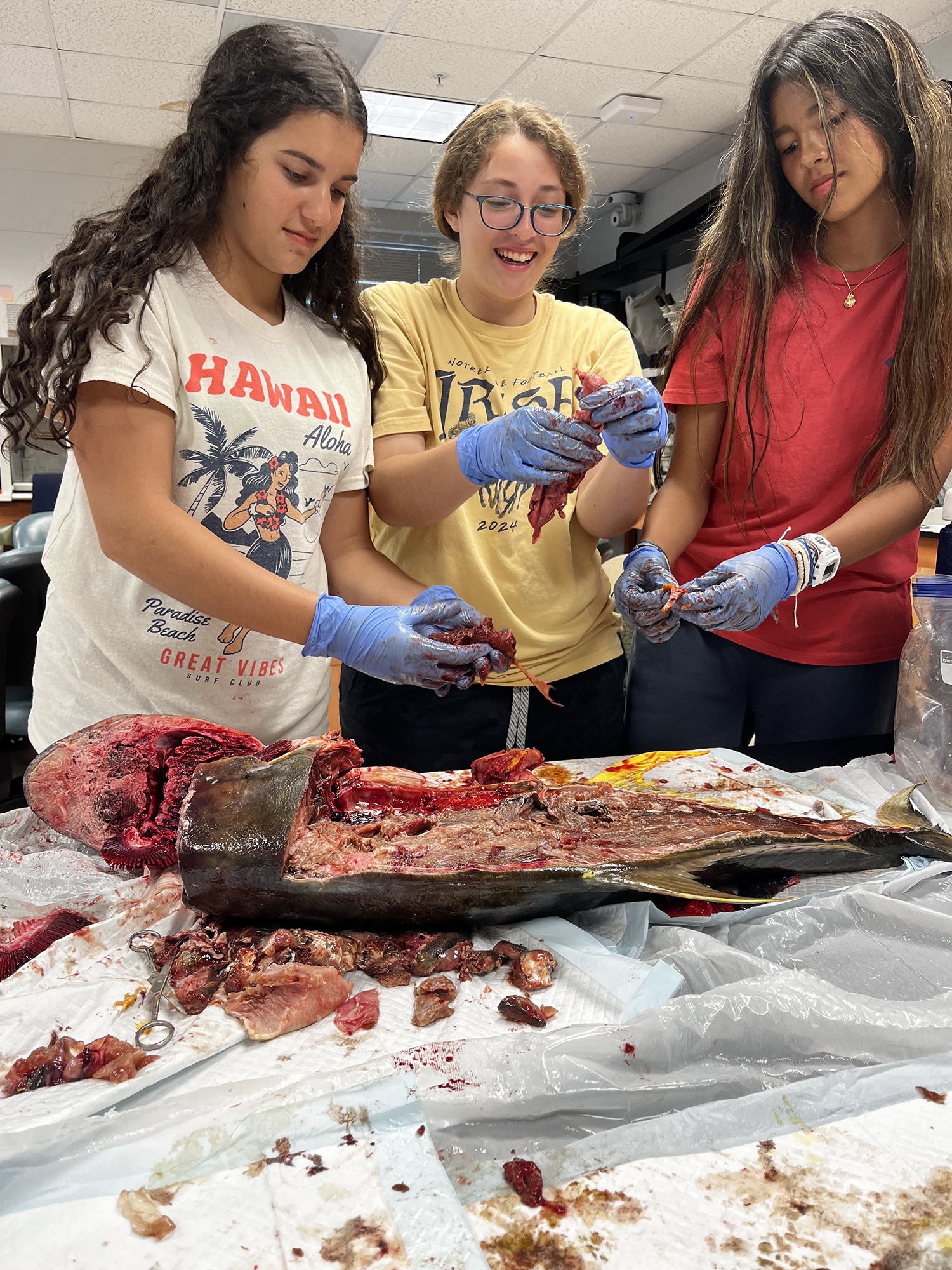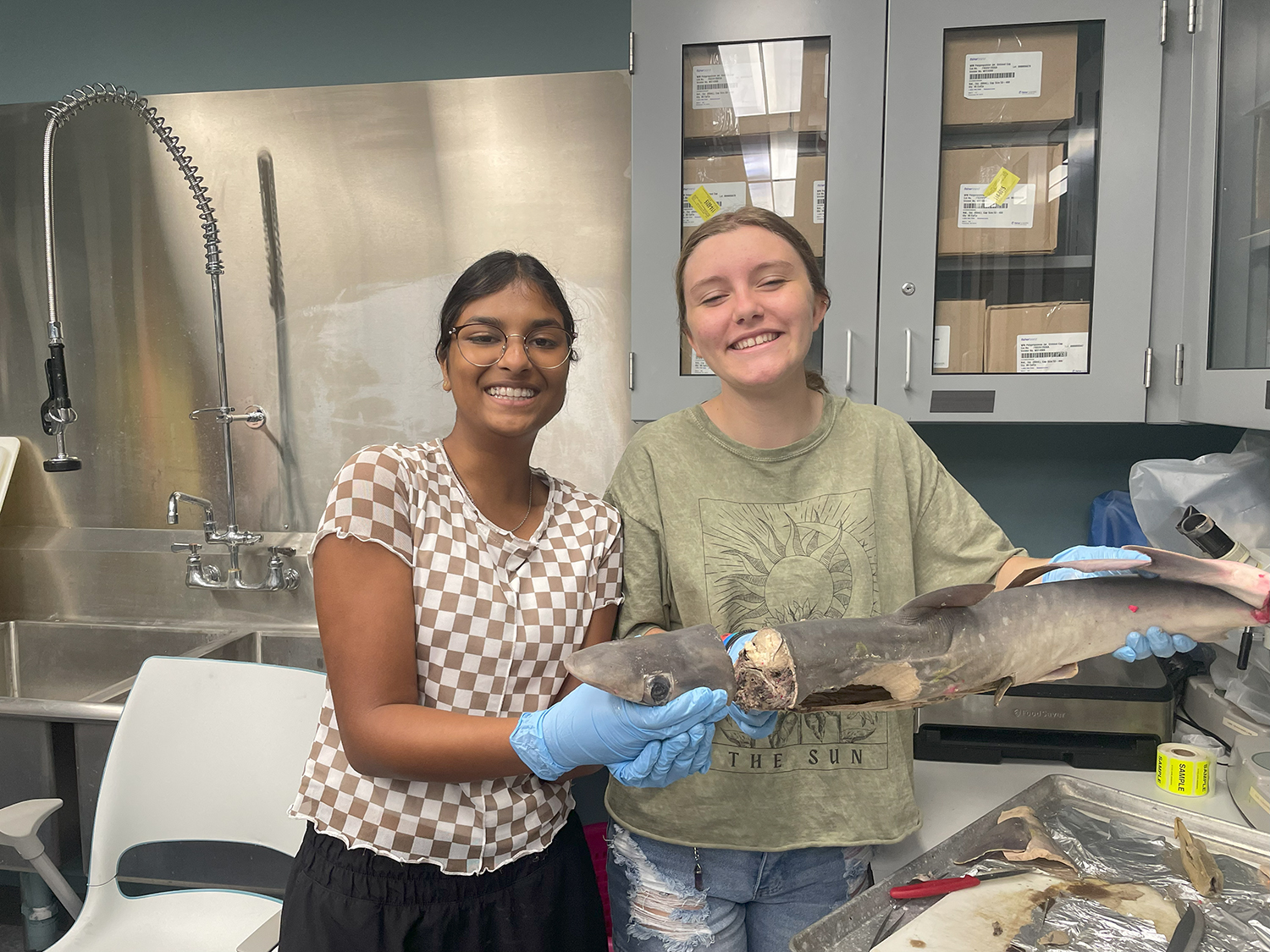Week 3 – Laboratory Activities, June 24 –25
Ella Mastry, Peer, Phytoplankton Lab
During the final week of OCG four lucky campers participated in a hands-on lab with Professor Brisbin and the University of South Florida, learning all about how to analyze and sort the different organisms found in a sample of sea water. During the lab the girls got to collect a sample with a plankton net towed off the seawall and took a closer look at the phytoplankton found in their sample. The tests they ran the day before gave them a clear look at pictures of each individual organism found in the water collected. They sorted through thousands of pictures and placed them in their respective files, whether it be detritus, jellies, copepods, diatoms, and many more.

Alana Smith, Peer, Fish Ecology
During the fish ecology lab, we learned about the influence of fish and the ocean’s resources on our daily lives. A large majority of the world heavily depends on our oceans, and keeping it clean and making sure we have sustainable fisheries is vital to its health. On our first day, we learned different attributes of fish and characteristics that revealed their different biological and physical adaptations to living. Later that day we dissected fish, identifying the inner ear, gender, and eye pupils. On our second day we learned about the importance of sustainable fishing. The campers learned vocabulary such as overfishing and bycatch which are problems for our commercial and recreational fishers. The campers also learned several different species of fish that have unique features and even got to draw their own species of fish. This lab was important because we also learned about the diversity of the fish populations in the areas we caught them. By comparing this with past years we can see the overall health of our ecosystem.
Johnna Schonstrom, Peer, Sharky Shenanigans
In the sharky shenanigans lab, campers had the opportunity to learn more about sharks and have a hands-on experience. On the first day of the lab, campers were given a brief overview of sharks and some fun facts about them. They were then given a small shark to dissect. The campers had so much fun getting to see how the shark had no bones, just cartilage. They compared a labeled graph of a shark to a real shark that they were seeing in front of them. They even got to take a shark eye lens home with them. On the second day of the lab, campers were given a hands-on shark tagging simulation. The process of shark tagging involves catching a shark, taking its measurements and samples, attaching a tracking device, and releasing it back into the water, but campers got a simplified version. They were given a 3D printed shark instead to perform their tests on. They were given a GPS tag to attach to their shark and were able to scan the tag with their phone to see where their shark has been. The campers could analyze speed and depth data of shark movements, and use that data to interpret patterns of behavior, such as feeding and hunting habits. Using this data, they could propose the creation of Marine Protected Areas (MPAs) to safeguard these critical habitats where the sharks live. Through this process, the campers developed critical thinking skills, considering questions like why sharks frequent certain areas and how to protect them, ultimately gaining a deeper understanding of the importance of MPAs in preserving shark populations and their habitats.

Arianna Alzuphar, Peer, Sea Squirts
I’ve always been interested in fungi and bacteria. Compared to plants and animals, they are much less understood by most people. So, it was no surprise that I was excited to observe them with the campers during the sea squirts lab. Using samples obtained by Ojas and his team, we extracted the organisms to be observed and classified under a microscope. The campers learned how to use dye to differentiate between gram negative bacteria, gram positive bacteria, and fungi. On the second day, we were given samples of water from the Gulf of Mexico to look for microplastics. All of the samples had microplastics, most being small plastic threads, invisible to the naked eye. Afterwards, the campers were able to see how even slightly different bacteria can have different niches within the digestive system, shown with sea squirts.
